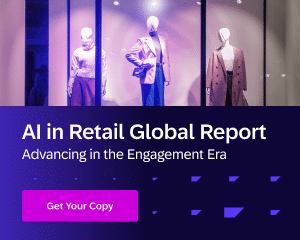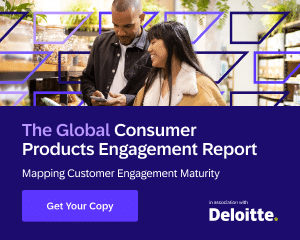With an expected revenue of $5.4 trillion by next year, the e-commerce industry is booming. That means there’s an enormous market available to online retailers as well as a growing amount of competition.
To stand out, your business has to hone a razor sharp marketing plan that engages consumers on multiple platforms, provides personalized content, and shows appreciation for your customers. This post explores six ways to do that.
1. Collect More Product Reviews
Three out of four consumers don’t trust advertising and most try to avoid it. In a market where your target audience detests ads, how do you get the word out about your great products? Two words: Product reviews.
Shoppers view ads as untrustworthy sources of information because they know brands are trying to sell them something. Reviews, on the other hand, are seen as helpful information provided without any ulterior motives. This makes them a powerful source of marketing.
You want to get at least 40 reviews for every product, but more is always better. To expand your review collection, provide customers with multiple opportunities to share their thoughts.
2. Use Abandoned Cart Emails
Approximately $4 trillion in merchandise is abandoned in online carts every year. This is a serious chunk of revenue that online retailers are missing out on. Luckily, you can easily recoup many of these sales with abandoned cart emails.
Abandoned cart emails are incredibly effective because they target consumers that have already indicated they want a product. They just need an incentive. You can provide that gentle nudge toward the “place order” button by automating abandoned cart emails.
In your emails, personalize the user-generated content to the abandoned merchandise. Include reviews and customer photos, and if you really want to go the extra mile, offer a discount on the order.
3. User-generated Content
Shoppers who view UGC are more than twice as likely to convert as those exposed to traditional marketing messages only. Consumers are so accustomed to being bombarded with brand-generated content that they’ve become desensitized to it and rarely take notice of it.
User-generated content is the best way to capture your customers’ attention and make them excited about your brand and product. UGC such as images, videos, and reviews make such a huge impact because customers immediately recognize themselves in this content. It’s social proof that your products are worthwhile, and it’s extremely influential in inspiring purchases.
Leverage and repurpose user-generated content to create personalized marketing for a diverse range of shoppers. This generates huge savings on content creation, establishes a deeper connection with your brand’s community, and provides high-converting content for every step of the customer journey.
4. Embrace Omnichannel Marketing
Omnichannel marketing is a must for e-commerce brands to stay competitive. Customers have more options than ever before when it comes to how they engage with brands. Your business has to be fully prepared to deliver an excellent experience no matter what platform or device a customer chooses to use.
Channel preferences vary greatly between demographics, so don’t make any assumptions here. Collect data to identify how your customers prefer to shop and where they spend their time online, and make these the focus of your omnichannel strategy.
Creating this seamless shopping experience across channels such as social media, email, and even in-store means that you have more opportunities to get your brand in front of customers.
Not only does this keep you top of mind and ahead of the competition, it also protects your marketing in case one channel becomes inactive. Companies that focused most of their resources on in-person marketing learned this lesson the hard way during the pandemic shutdowns. The more avenues you have to engage with your audience, the better off your brand will be.
5. Personalized Marketing at Scale
Many brands shy away from personalized marketing because of the high price usually associated with it. It’s expensive to create personalized marketing at scale using channels such as digital ads and social media influencers.
However, with the right software, companies can establish one-to-one connections with customers and deliver personalization at scale without the exorbitant costs. Personalized marketing at scale is efficient and effective, providing an ROI of up to eight times the marketing spend and increasing order values by more than 10%.
Emarsys uses sophisticated artificial intelligence to consolidate offline and online purchase data to create real-time, personalized shopping experiences for millions of customers. With automated audiences, unified customer data, and integrated analytics that show campaign effectiveness across all channels, your brand can easily reap the benefits of scaled personalization.
6. Customer Appreciation
The running theme throughout this list is the value your loyal community can provide. From product reviews to enabling personalized content at scale, your customers are an indispensable resource. Keep them engaged and enthusiastic about your brand by showing your appreciation.
You can frame your customer appreciation in countless different ways. Launch a quarterly customer appreciation week and thank customers with a discount, celebrate customer anniversaries with a personalized email and gift, or regularly feature your customers on social media.
The more you show your appreciation, the more your customers will enjoy engaging with your brand through purchases, referrals, and valuable user-generated content.
Conclusion
Great marketing is the key to successfully increasing your brand’s reputation, conversion rate, and average order values. Use the ideas above to overhaul your marketing strategy, focusing on community engagement, automated abandoned cart emails, and omnichannel campaigns that allow for personalization at scale.












